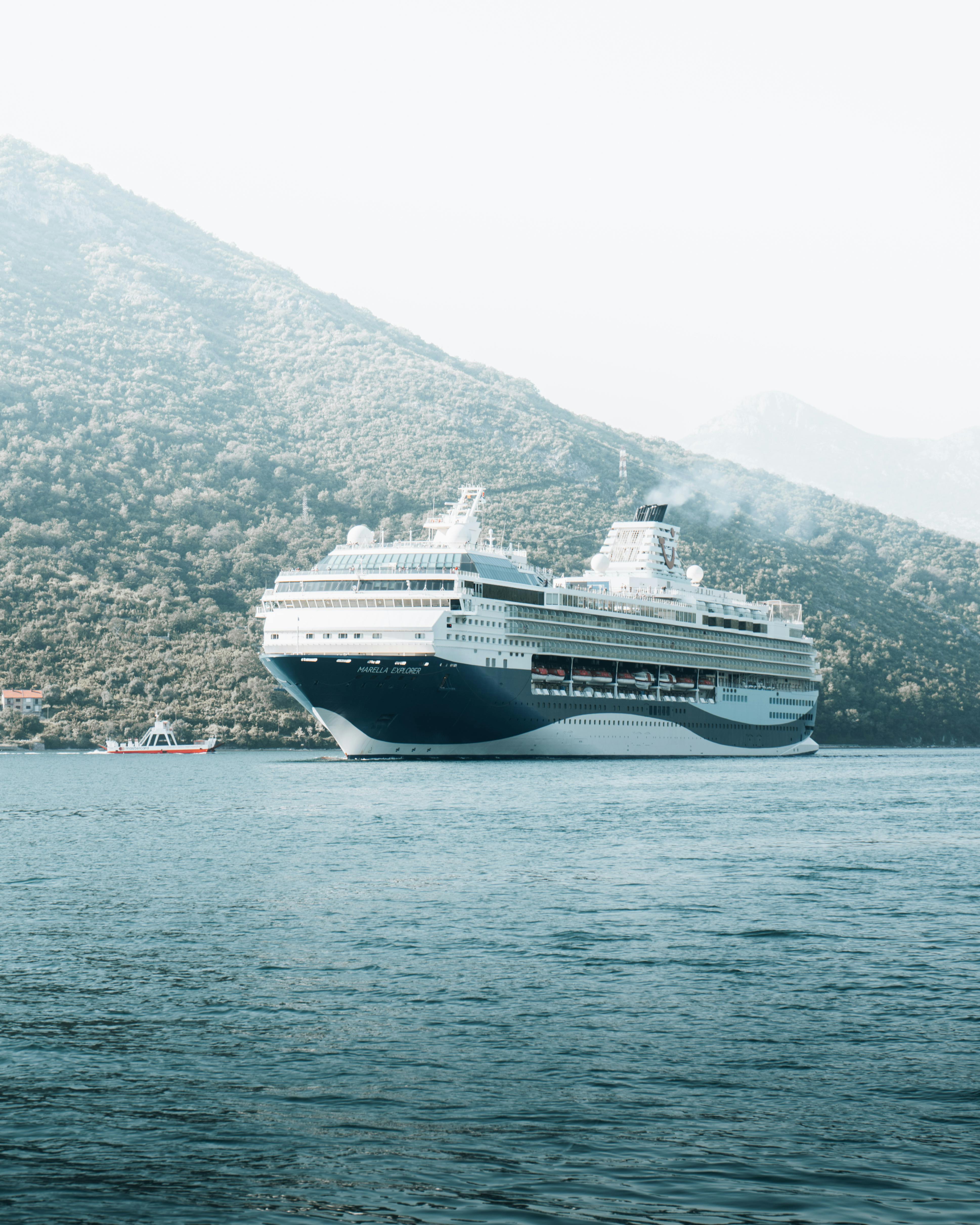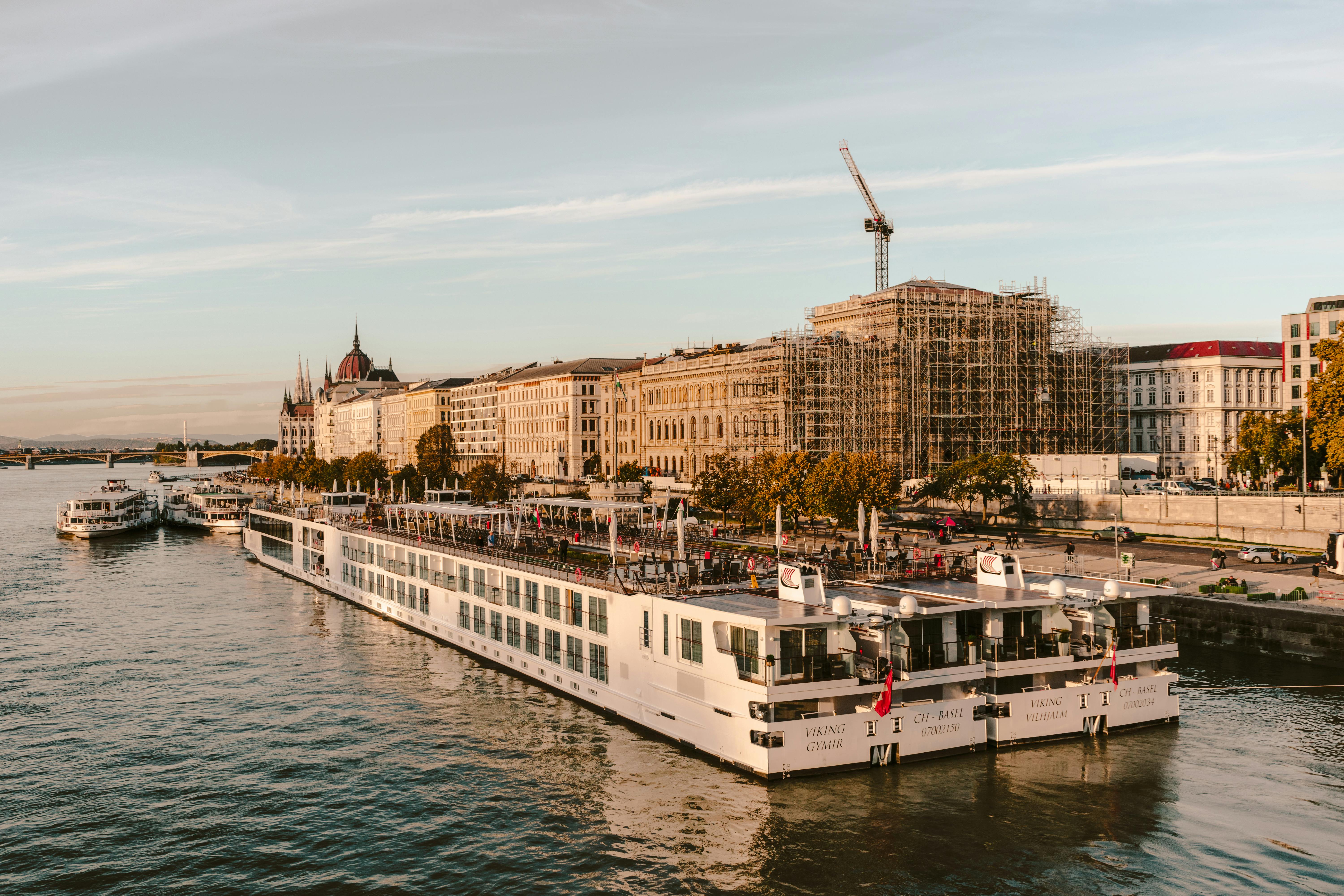Europe Cruise Guide 2025: The Ultimate Blueprint for Unforgettable Voyages
Let’s be honest—Europe by sea grabs hold of your imagination in a way few other journeys can. My earliest memory of a European cruise is standing on the deck just after sunrise, a mountain-framed Italian village blinking awake in the mist, and thinking: “Why don’t more people talk about this feeling?” If the sheer idea of gliding into a different historic port each morning sparks something in you—maybe a whiff of adventure, maybe nostalgia, maybe just wanderlust—then this is precisely the guide I wish I’d had before years of Mediterranean misadventures, Baltic discoveries, and late-night chats with port locals.
This isn’t some templated, AI-spun “top 5” recommendations list. I’ve made mistakes (missed ferries, wrong season booking—I’ll own those), discovered “impossible” gems thanks to local friends, changed my cruise planning strategies as the industry evolved, and regularly consult for a mid-size travel firm, so I see trends up close. If you’re after practical advice, honest route analysis, in-depth sample itineraries, budget breakdowns that don’t sugarcoat, real-world accessibility info, sustainable travel options (it’s a big deal now!), and a few things nobody else will tell you—well, you’re in the right place.
Why Cruise Europe? Surprising Advantages
Ever noticed how European cruise routes feel dramatically different from Caribbean or Alaska sailings? At first, I just chalked it up to the scenery. But after dozens of trips, the contrasts go deeper—cultural density, port infrastructure, short port-to-port distances, diverse shore excursions, and the sheer age of most cities you’ll dock at. According to Travel Weekly’s 2024 industry survey1, more than 67% of past North American cruisers rate Europe as the “most immersive cruise region globally.” Let that sink in for a moment: the majority see Europe as the cruise region that feels least like a floating resort and most like a doorstep into living history.
Key Insight: The Magic Is in the Ports
In the Caribbean, ships are the show. In Europe, ports are the heart of the story. Expect diverse, deeply local food, multilingual experiences, and history spanning centuries—all walkable from the pier.
- Access to dozens of UNESCO World Heritage Sites without multiple hotel stays
- Efficient, less-frazzling connection between countries (Italy to Croatia to Montenegro in days)
- Greater choice of cruise size and experience—from mega-ships to boutique yachts and river cruises
- Seasonal festivals, local markets, and special-access events timed to the cruise calendar
- Options for every budget and interest, from foodies to art lovers to multi-generational families
“Europe is the only region where I wake up not knowing whether I’ll hear Italian, Greek, or Spanish over breakfast—and I wouldn’t have it any other way.”
Best Europe Cruise Routes for 2025: Beyond the Obvious
All right—let’s tackle the million-euro question: which routes genuinely stand out in 2025? Not just the “usual suspects” (Venice to Athens or Barcelona to Rome), but newer, emerging mini-itineraries, river journeys, and custom one-way legs that travel insiders are raving about. I’ll revisit classic circuits, then dig into less-traveled 2025 routes based on real demand shifts and sustainability trends.
First, here’s a table breaking down the most popular sea regions, their unique flavors, optimal seasons, and what truly sets them apart. (After dozens of sailings, I’ll admit even I need this cheat sheet sometimes.)
| Region | Sample Ports | Best Months | Top Feature |
|---|---|---|---|
| Western Mediterranean | Barcelona, Marseille, Rome, Florence | May–October | Food & Art Culture |
| Eastern Mediterranean | Athens, Dubrovnik, Split, Kotor | April–June, Sept–Oct | Ancient History, Smaller Ports |
| Baltic & Scandinavia | Copenhagen, Stockholm, St. Petersburg, Tallinn | June–August | Midnight Sun, Castles |
| British Isles & Iceland | Dublin, Edinburgh, Reykjavik | May–August | Wild Landscapes, Village Culture |
| Danube & Rhine Rivers | Budapest, Vienna, Amsterdam, Basel | March–October | Inland Capitals, Wine |
That’s a lot to take in, I know. Before we move deeper, which region are you most curious about? (I’ve been surprised more than once by the routes that end up being my personal favorites—sometimes the less hyped, the better.) Onward to practical planning, pitfalls, and the real lessons I learned the hard way.
Essential Planning & Mistakes to Avoid
I’ll confess—my first self-booked European cruise was a logistical mess. Wrong port transportation, misjudged season (Venice in August = 38°C + wall-to-wall crowds), overlooked visa quirks, and overpacking gear I never used. Based on hard-won lessons, let’s break planning down into steps with common landmines clearly marked.
1. Understand the Actual Embarkation Port— You’d think “Venice” means Venice, right? Not always. Many major lines dock in Trieste, Ravenna or Civitavecchia (for Rome), often over an hour from the city center. Budget accordingly and double-check transfers.
2. Prioritize Itinerary Over Ship Features— Ships are improving every year (waterparks, Michelin-star restaurants, Broadway shows). But I’ve seen countless travelers regret not having enough time in port because they picked the ship, not the route. Destination-focused lines (Azamara, Viking, etc.) maximize port time.
- Match port times with bucket-list experiences (Some ships leave at 2pm; others at 8pm!)
- Ask: does your cruise include tender ports (requiring smaller boats to reach shore)? These can be slower and less accessible
- Will you need Schengen visas, and do travel dates align with your passport eligibility?
- Does the ship or itinerary match your ideal crowd—adults, families, solo, luxury, party?
Mistake to Avoid: Misreading Seasonality
Peak summer (mid-June to late-August) draws big crowds and top prices, but May, late September, and even October can offer better weather, prices, and event access.
Insider’s Step-by-Step Itinerary Builder
- Outline your “can’t-miss” ports before shortlisting cruises
- Study port arrival/departure times to maximize time on shore (double-check schedules after booking—ports change more often than expected!)
- Balance “sea days” with port days—Balkans routes and Danube cruises may have more port-intensive days than, say, the Western Med
- Look for local events—festivals, culinary fairs, or “white nights” (Scandinavia) that can transform a port visit
- Plan your onshore mobility (public transport, bikes, rental cars, walking tours, or ship shuttle buses)
“People often think the ship will ‘take care of everything’ in Europe, but real magic comes when you treat the itinerary as a launchpad for immersive exploration, not just a floating hotel schedule.”
Budgeting, Timing, and Booking Secrets Nobody Tells You
Here’s where honesty matters. Europe cruise pricing is all over the place. I’ve found $600 weeklong deals (spring Black Sea, small ships) and $20,000 suites on luxury lines. Most travelers focus just on sticker price—not total spend. The real budget shocker? Port transfers, excursions, local meals, and last-minute events can double your costs. To make your money work harder:
- Book 10-14 months in advance for peak season—cruise lines open 2025 bookings in late 2023/early 2024 (2)
- Watch for shoulder season deals—prices are routinely 20-40% lower for May, early June, or October sailings
- Use flexible home ports—flying into Barcelona but sailing from Marseille can save hundreds on airfare
- Compare “cruise only” vs. bundled offers (airfare, pre-cruise hotels, excursions)—sometimes the package is a steal, sometimes not
- Budget for port taxes, shore dining, and local transit: these can add €200-€700+ per person, per week
Don’t Count Out Repositioning Cruises: These one-way, longer trips happen in spring and autumn as ships move between regions. They’re cheap, less crowded, and offer rare port combos—great for flexible travelers.
Still unsure what fits your budget? I made a simple reference table (real examples, 2025 rates as of March).
| Itinerary Type | Starting Price (pp) | Average Spend (week) | Best Value Season |
|---|---|---|---|
| Classic Med (7 nights) | €800 | €1,800 | May, Oct |
| Baltic Capitals (10 nights) | €1,300 | €2,400 | June |
| Luxury Yacht (Greece, Croatia) | €2,600 | €3,800+ | Sept |
| Danube River (7 nights) | €1,200 | €1,900 | March, Oct |
Key Takeaway
Don’t just compare “cruise fare”—always calculate likely total spend and read recent reviews for surprise fees, especially post-pandemic. Pricing transparency has improved, but you’ll still run into hidden extras (4).
Booking Q&A—Snagging the Best Deals
People ask me all the time: Do I need a travel agent? Does booking direct ensure the best deal? Honestly, answers have changed. In 2025, travel advisors still excel for complex, multi-leg or luxury trips—especially if you want perks or group rates. For simple itineraries, online search and loyalty programs now offer great flexibility. Sites like Cruise Critic (5) aggregate credible user reviews and last-minute flash deals, which I use to track emerging price dips.
And please—avoid booking based only on splashy promotional emails. Always check the fine print for port changes, last-minute itinerary swaps or “forbidden” booking windows that block price drops. Last April, a client of mine locked in a “deal” only to discover their Barcelona cruise would now depart from Marseille and skip Spain entirely. Situations like this are more common than you’d think—the solution is careful scrutiny and (when in doubt) asking before booking.

Sustainability and Accessibility: The New Frontiers of Europe Cruising
I’ll be completely honest—back in 2010, I barely considered sustainability while trip planning. Now, most European ports and cruise lines are doubling down on green tech, local partnerships, and genuine accessibility improvements. If that’s not on your radar, it should be: cities like Venice, Dubrovnik, and Santorini are capping ship landings to prevent “over-tourism,” and the best lines spotlight eco-certifications in marketing.
Here’s the big takeaway: The cruise you book in 2025 isn’t the same as five years ago. Fuel standards are stricter, shore power is the new norm, and electric shuttles, plastic-free policies, and local-supply sourcing have become industry standards (6).
- Research your ship’s environmental track record—most lines now publish annual sustainability reports online
- Look for shore excursions that are certified as low-impact and locally owned (7)
- Cities are testing “timed shore visits” and digital crowd monitoring—check local port authority sites for updates
- Small ships (under 500 passengers) often access sensitive or protected areas larger ships can’t even approach
My Evolution
I used to dismiss sustainability as a buzzword, but after seeing the impact on ports like Kotor and Venice, I now select lines with real green credentials, even if they cost more. Traveler demand for sustainability is shaping the 2025 itinerary map in a way nobody predicted before COVID.
Accessibility: What’s Actually Improved—and What Hasn’t
Let me clarify: accessibility in Europe is still hit-or-miss. Large ships have modern ramps, lifts, and ADA staterooms, but old city ports (think Split or Valletta) can present cobblestone chaos. Recent EU initiatives have yielded progress: major Mediterranean and Baltic ports have been required to improve dock access, shuttle options, and wayfinding for non-English speakers since 2022 (8). Even so, travelers with mobility needs should always check specifics for both ship and destination.
- Request detailed port mobility guides before booking
- Ask about tender port alternatives for wheelchairs or strollers
- Contact the cruise line and local port agent for real-time accessibility updates—never settle for a generic “fully accessible” claim
Hidden Gems & Local Insider Tips for 2025
A confession: I’m notorious for leaving tours halfway to explore side alleys, ask questions, and talk to cooks or shop owners wherever I cruise. These late-night conversations, impromptu detours, and “hidden gem” finds are what most cruise blogs miss entirely. For 2025, here are the port experiences worth building your itinerary around—favored equally by locals and travel pros.
- Braubach, Germany (Rhine cruise): Escape the bigger cities and tour Marksburg Castle—one of the only original hilltoppers to survive centuries of war
- Zadar, Croatia (Adriatic): The Sea Organ and Sun Salutation installations, a haunting musical experience right on the docks (trust me, nothing like it anywhere else)
- Bonifacio, Corsica (Western Med): Cliff-perched old town with alleyways so narrow you can touch both sides at once; best explored at dusk with a local guide
- Harstad, Norway (Norwegian coast): Time your cruise for “midnight sun” hiking; some lines include private boat trips to uninhabited fjord islands
- Porto, Portugal (Douro river): Spend the day on a port wine estate, learning traditional harvesting—book directly with local winemakers for an authentic touch
Personal Anecdote
In 2019, completely off-script, I wandered the backstreets of Valletta after a tour—ended up at a local festival where I was treated to homemade pastizzi. That memory (and the locals’ pride in sharing their food) eclipsed any “clickable” landmark. Sometimes, the best moments aren’t on any brochure—always leave room for the unexpected!
Emerging Trends: Small Ships, Slow Cruising, and Culinary Focus
Freshly minted for 2025: small-ship and “slow cruising” demand has exploded. According to CLIA’s latest Trends Report (10), over 48% of new bookings in Europe are for ships under 750 guests, signaling travelers want more time ashore, niche ports, and deeper local food immersion.
- Prioritize lines like Ponant, Windstar, or SeaDream for slow, port-rich itineraries
- Prefers food to floating casinos? Seek out themed cruises—wine/cuisine routes on French and Spanish rivers outpace “party” trips tenfold
- Check for “overnight in port” options—late-night markets, music, or festivals are emerging booking drivers for 2025
“Our guests tell us it’s the unscripted, immersive moments—lunch with a local winemaker, a midnight walk in Bergen—that make Europe magical. Ships just set the stage.”
Before you run off to overhaul your travel wishlist (believe me, I still update mine yearly), let’s reset and tackle packing, safety pointers, and top travel hacks I wish I’d known when I first set sail.
Packing, Safety, and Family Advice for Real-World European Cruising
I have to say, packing for European cruises challenged me in ways the Caribbean never did. Unpredictable Mediterranean weather, ever-shifting “smart casual” dress codes, last-minute port changes, and the unspoken rules of old-world etiquette. Sound familiar? If not, it will—so learn from my rookie mistakes.
Real Talk: Less Is More. You’ll see everything from linen suits to hiking boots on board. Ignore “fashion” blogs; smart layers, re-wearable basics, and resistant shoes are your best friends. Leave hairdryers, heavy converters (modern ships supply both), and formalwear behind unless your itinerary requires.
- Layers (light rain jacket, scarf, warm cardigan)
- Adaptable walking shoes—Europe’s cobblestones are no joke
- Portable power bank (shore excursions can drain your phone battery quickly)
- Reusable water bottle—most ships and many ports now have refill stations to reduce plastic waste
- For families: compact board games, kid-safe sunscreen, and snacks (those lengthy port days can throw off local meal timetables)
Safety & Health Updates
The pandemic changed Europe’s cruise safety standards. Expect more health screening, flexible refund/cancellation terms, and required travel insurance. It’s worth downloading port-specific health codes before departure—last summer, I almost missed a Greek island stop for not pre-filling a digital entry form.
Family, Accessibility & Solo Considerations
Europe’s cultural sites can be overwhelming for younger kids, but family-friendly cruise lines offer supervised activities and flexible menus. The best lines (MSC, Disney, AmaWaterways) cater to multi-generational groups. For solo travelers: 2025 sees record numbers of single cabins and activities—gone are the days when “cruising alone” meant a massive single supplement.
Pro tip: always tell your cruise line about specific accessibility or dietary needs before sailing—they’re much more responsive if notified in advance.
Frequently Asked Questions & Top Resources
- Are European river cruises less “touristy” than large sea cruises?
Generally, yes. The pace is slower, passenger counts are smaller (100–200), and port access is usually right in the city center (11). - How do you pick between Greek Isles, Norwegian fjords, or Baltic capitals?
Think about weather, interests (history vs. scenery), and how much transit time you want. Themed itineraries (food, music, wellness) are exploding in popularity for 2025. - Best sites for live pricing and reviews? Cruise Critic, CLIA, Lonely Planet, and direct line websites. Always double-check actual ship/itinerary match before booking.
- How important is travel insurance? Post-2020, essential. Look for coverage that includes COVID/cancellation protection and required documentation for destination countries.
References
References
Ready to Set Sail?
Whether you’re a first-timer or a cruise veteran, Europe’s waterways in 2025 promise a level of diversity, historical immersion, and local surprise that’s practically unmatched anywhere else. Chart your route, pick ports that speak to your soul—not someone else’s Instagram feed—and leave room for spontaneous adventure (and, yes, the occasional wrong turn). Real discovery happens when the “plan” gives way to serendipity.
I’d love to hear your most memorable Europe cruise stories or answer questions in the comments. Until then—happy sailing!


